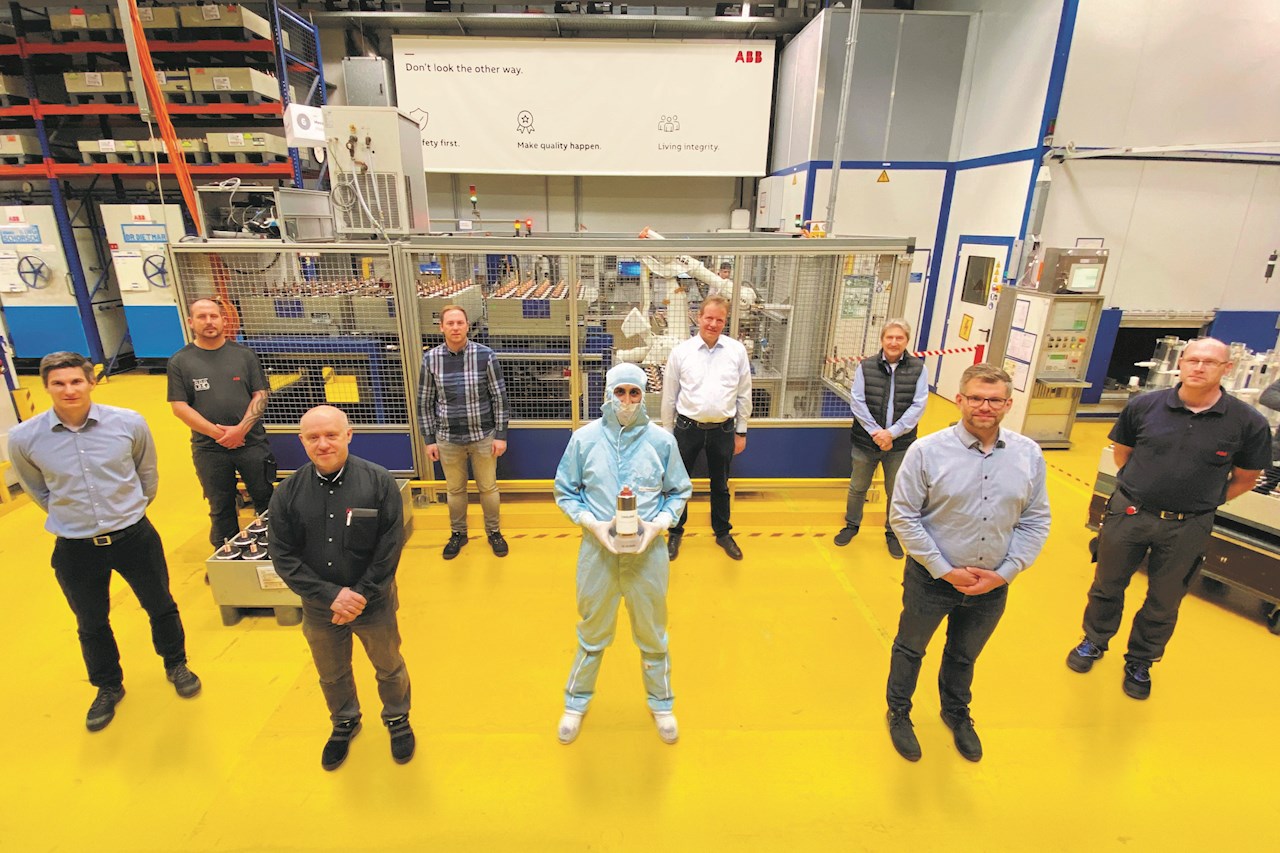Forming the heart of medium-voltage switchgear, vacuum interrupters (VIs) are an indispensable part of the medium-voltage distribution network. The core component for all switching applications, VIs are widely used in utility power transmission systems, power generation units, and power-distribution systems for railways, arc furnace applications, and industrial plants.
Central components within ABB switchgear systems, VIs are a key component of ABB Electrification’s portfolio which includes voltages from 1.2 kV to 40.5 kV and for short-circuit currents up to 63 kA. In addition, Original Equipment Manufacturers (OEMs) from all over the world value the high expertise and quality of ABB when it comes to building their own solutions.
How does a vacuum interrupter work?
A vacuum interrupter is a switch that uses electrical contacts in a vacuum. VIs are of utmost importance for circuit breaker’s quenching capability, interrupting the current when an arc occurs between the contacts of the VI. Separation of the electrical contacts results in a metal vapor arc, which is quickly extinguished. Since the arc is contained within the interrupter, switchgear using vacuum interrupters are very compact compared to switchgear using air, SF6 or oil as arc-suppression medium.
How are vacuum interrupters made?
The ABB factory in Ratingen, founded in the 1920s in today’s city-center and moved to a completely new site in 1999, fulfills the latest and most demanding standards regarding layout, logistics and efficiency. It is the global supplier of VIs for ABB apparatus factories and external customers. Reaching this milestone in the production of ABB vacuum technology demonstrates the successful combination of efficient processes and highly qualified employees, able to constantly fulfil high standards in quality and innovation.

Team image from development to production 
Preparatory works under clean room conditions before vacuum interrupters are placed in a vacuum oven 
Preparatory works under clean room conditions before vacuum interrupters are placed in a vacuum oven 
Assembly of a contact in the clean room using a servo electric press 
Automated testing and final assembly of vacuum interrupters 
Vacuum interrupters 
7 millionth vacuum interrupter
The production of VIs requires the highest quality standards to achieve and prove dielectric strength. These high-tech products are manufactured under clean room conditions using furnaces and embed the latest ABB technologies. The next steps include double internal pressure measurement for the vacuum interrupters (magnetron method), quarantine storage in pressure chambers filled with inert gas and a final X-ray inspection of every single vacuum interrupter. The brand new VI is then ready for its functional integration directly into a circuit breaker or in ABB’s inhouse pole embedding or siliconization process. Embedding the VI in epoxy resin, thermoplastic or silicone are effective methods used within ABB to achieve the high dielectric ratings required of a compact VI design.
The efficient combination of automation together with human expertise and supervision creates a state-of-the-art product with the highest quality, engineered and produced by ABB in Germany. The constantly improving precision end efficiency coming from automation, combined with materials, product and process innovations help the ABB factory in Ratingen to increase the VI output while excelling on quality standards.
A milestone to be celebrated
Thorsten Fugel, Local Division Manager, Germany, said: “Achieving the goal of the seven millionth VI produced is a milestone to celebrate and all colleagues involved in Ratingen should be proud of this accomplishment. Their commitment even in challenging times means that we can always be there for our customers.”